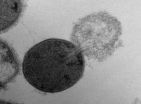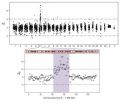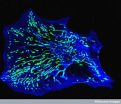(Press-News.org) MAYWOOD, Il. - Among the most feared and devastating strokes are ones caused by blockages in the brain's critical basilar artery system. When not fatal, basilar artery strokes can cause devastating deficits, including head-to-toe paralysis called "locked-in syndrome."
However, a minority of patients can have good outcomes, especially with new MRI technologies and time-sensitive treatments. These treatments include the clot-busting drug tissue plasminogen activator (tPA), and various new-generation neurothrombectomy devices, according to a review article in MedLink Neurology by three Loyola University Medical Center neurologists.
About 85 percent of strokes are ischemic, meaning they are caused by blockages in blood vessels. (The remaining strokes are caused by bleeding in the brain.) About 4 percent of all ischemic strokes are caused by blockages in the basilar artery system. The basilar artery supplies oxygen-rich blood to some of the most critical parts of the brain.
The first clinical description of a basilar artery stroke was reported in 1868, according to the MedLink article, which was written by Loyola neurologists Sarkis Morales Vidal, MD, (first author); Murray Flaster, MD, PhD; and Jose Biller, MD; and edited by Steven R. Levine, MD, of the SUNY Health Science Center.
A character in Alexandre Dumas' novel, "The Count of Monte Cristo," described as a "corpse with living eyes," had what appears to be locked-in syndrome. More recently, the book and movie "The Diving Bell and the Butterfly" describe a French journalist with locked-in syndrome. The journalist was mentally intact, but able to move only his left eyelid. He composed a moving memoir by picking out one letter at a time as the alphabet was slowly recited.
The MedLink article reports that an estimated 80 percent of locked-in patients live for at least five years, and some patients have survived for more than 20 years. One survey of long-term survivors found that 86 percent reported their attention level was good, 77 percent were able to read and 66 percent could communicate with eye movements and blinking. Forty-eight percent reported their mood was good.
The review article cites a study of basilar artery stroke patients that found that a month after the stroke, one-third of patients were dead and one-third needed help for activities of daily living such as bathing, dressing and eating.
Most basilar artery strokes are caused by atherosclerosis (hardening of the arteries). The second-leading cause is clots.
Leading risk factors for basilar artery strokes are high blood pressure, diabetes, smoking, high cholesterol, coronary artery disease and peripheral vascular disease. Affected individuals tend to be over age 50. Basilar artery strokes are more common in men than in women.
###
Dr. Morales is an assistant professor, Dr. Flaster is an associate professor and Dr. Biller is a professor and chair in the Department of Neurology of Loyola University Chicago Stritch School of Medicine.
Neurologists describe most feared and devastating strokes
2013-01-10
ELSE PRESS RELEASES FROM THIS DATE:
Study quantifies the size of holes antibacterials create in cell walls to kill bacteria
2013-01-10
The rise of antibiotic-resistant bacteria has initiated a quest for alternatives to conventional antibiotics. One potential alternative is PlyC, a potent enzyme that kills the bacteria that causes strep throat and streptococcal toxic shock syndrome. PlyC operates by locking onto the surface of a bacteria cell and chewing a hole in the cell wall large enough for the bacteria's inner membrane to protrude from the cell, ultimately causing the cell to burst and die.
Research has shown that alternative antimicrobials such as PlyC can effectively kill bacteria. However, fundamental ...
Study provides new clues for designing an effective HIV vaccine
2013-01-10
New insights into how a promising HIV vaccine works are provided in a study published by Cell Press January 10th in the journal Immunity. By analyzing the structure of antibody-virus complexes produced in vaccine recipients, the researchers have revealed how the vaccine triggers immune responses that could fight HIV-1 infection. The study could help guide efforts to increase the vaccine's production, which currently is not high enough for clinical use.
"This is the first comprehensive study of the repertoire of antibodies that were induced by an HIV vaccine and were ...
Study points to a safer, better test for chromosomal defects in the fetus
2013-01-10
A noninvasive, sequencing-based approach for detecting chromosomal abnormalities in the developing fetus is safer and more informative in some cases than traditional methods, according to a study published by Cell Press January 10th in The American Journal of Human Genetics. This method, which analyzes fetal DNA in the mother's blood, could provide women with a cost-effective way to find out whether their unborn baby will have major developmental problems without risking a miscarriage.
"Our study is the first to show that almost all the information that is available from ...
Regulating single protein prompts fibroblasts to become neurons
2013-01-10
Repression of a single protein in ordinary fibroblasts is sufficient to directly convert the cells – abundantly found in connective tissues – into functional neurons. The findings, which could have far-reaching implications for the development of new treatments for neurodegenerative diseases like Huntington's, Parkinson's and Alzheimer's, will be published online in advance of the January 17 issue of the journal Cell.
In recent years, scientists have dramatically advanced the ability to induce pluripotent stem cells to become almost any type of cell, a major step in ...
Next steps in potential stem cell therapy for diabetes
2013-01-10
Type 1 and type 2 diabetes results when beta cells in the pancreas fail to produce enough insulin, the hormone that regulates blood sugar. One approach to treating diabetes is to stimulate regeneration of new beta cells.
There are currently two ways of generating endocrine cells (cell types, such as beta cells, that secrete hormones) from human embryonic stem cells, or hESCs: either generating the cells in vitro in culture or transplanting immature endocrine cell precursors into mice.
Researchers from the University of California, San Diego School of Medicine, collaborating ...
New insights into HIV vaccine will improve drug development
2013-01-10
DURHAM, N.C. – Four years ago, a potential HIV vaccine showed promise against the virus that causes AIDS, but it fell short of providing the broad protection necessary to stem the spread of disease.
Now researchers -- led by Duke Medicine and including team members from the National Institute of Allergy and Infectious Diseases of the National Institutes of Health, the U.S. Military HIV Research Program and the Thailand Ministry of Health -- have gained additional insights into the workings of the vaccine that help explain why it benefited a third of recipients and left ...
Cancer scientists determine mechanism of 1 of the most powerful tumor-suppressor proteins, Chd5
2013-01-10
Cold Spring Harbor, NY – A team of cancer researchers at Cold Spring Harbor Laboratory (CSHL) has solved the mystery of how one of the most powerful of the body's natural tumor-suppressing proteins, called Chd5, exerts its beneficial effects.
The findings, published online today in the journal Cell Reports, are important because Chd5 engages processes fundamental to cancer prevention. Conversely, when Chd5 is mutated or missing, an important door is opened to cancer initiation.
"For this reason, figuring out the mechanics of how Chd5 works to prevent cancer can directly ...
Researchers find causality in the eye of the beholder
2013-01-10
We rely on our visual system more heavily than previously thought in determining the causality of events. A team of researchers has shown that, in making judgments about causality, we don't always need to use cognitive reasoning. In some cases, our visual brain—the brain areas that process what the eyes sense—can make these judgments rapidly and automatically.
The study appears in the latest issue of the journal Current Biology.
"Our study reveals that causality can be computed at an early level in the visual system," said Martin Rolfs, who conducted much of the research ...
Study identifies infants at highest risk of death from pertussis
2013-01-10
ARLINGTON, VA, January 10, 2013—A study released today from the upcoming issue of the Journal of the Pediatric Infectious Diseases Society (JPIDS) found that taking early and repeated white blood cell counts (WBC) is critical in determining whether infants have pertussis and which of those children are at highest risk of death from the disease.
In 2010, California reported its highest pertussis rates in 60 years. Murray, et al.'s retrospective study used medical records from five Southern California Pediatric Intensive Care Units between September 2009 and June 2011. ...
Haiti can quell cholera without vaccinating most people, UF researchers estimate
2013-01-10
GAINESVILLE, Fla. --- Cholera could be contained in Haiti by vaccinating less than half the population, University of Florida researchers suggest in a paper to be published Thursday in the journal Scientific Reports.
The work places UF's Emerging Pathogens Institute in the pro-vaccination camp in an ongoing international debate over how best to contain the two-year-old epidemic that has claimed thousands of lives.
The Centers for Disease Control and Prevention has been skeptical about the effectiveness of vaccination against cholera in this setting. It has instead ...



